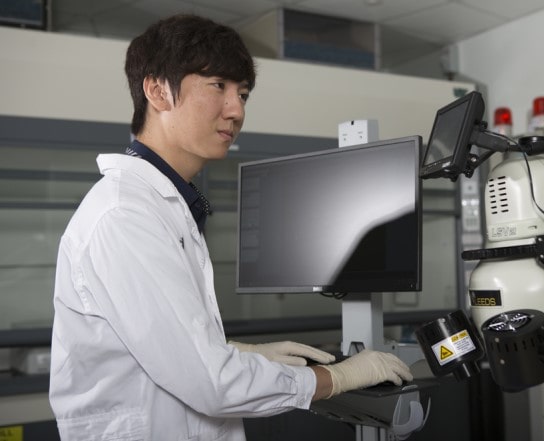The call came in: There has been a murder.
Armed with a camera, measuring tools, notepad and pencil or pen, Shawn rushed down to the crime scene with the police officers.
As a forensic officer on the frontline conducting CSI or crime scene investigation, his job was to recover and preserve scientific evidence found onsite like hair, blood and fibers, which would be brought back to a laboratory for further analysis.
This could be from major cases like murder and rape, to burglary and suicide.
He also had to carefully document the scene and draw a sketch plan so it could be reconstructed later.
In the past, he might have used a measuring tape and walked around to manually document distances on paper.
Today, forensic officers can whip out a handy tool the size of a walkie-talkie which measures precise distances via laser. All they have to do is stand at one spot and point.
“Because this method minimizes contact with surfaces, it also reduces contamination by many folds, on top of being more accurate and efficient,” said Shawn.
In the case of major crimes where even more precise information is needed, Shawn might have deployed a 3D laser scanner.
Placed on a tripod, it just takes about five minutes to scan millions of points via laser per scan station, so an entire scene can be reproduced 3D on a computer screen for even more detailed investigation and analysis back at the office.
In the past, it would have taken officers a much longer time to document all these details onsite, with less accuracy.
Time savings are valuable for while it might take an onsite forensic officer an hour to complete his work for simple cases like housebreaking, it could take much longer for complex cases.
Shawn’s most time-consuming case in collecting evidence when he was a Senior Crime Scene Specialist was a double murder at Bedok Reservoir on which he spent about 14 hours.
“Our drive toward the future of forensics is really to do things much faster and better,” he said.
Shawn loves his job, for he belongs to the fortunate group of people who know exactly what they want to do from a young age.
When he was a 14-year-old studying at Chung Cheng High, he saw an English teacher reading a book titled “The Encyclopedia of Forensic Science”.
Curious, he borrowed the book and once he opened it, was hooked on the world of collecting, preserving and analyzing scientific evidence in crime scene investigation.
He steadily steered his way toward a forensics career, studying physics and chemistry at Nanyang Junior College, majoring in chemistry at the National University of Singapore, before doing a Master’s degree in analytical toxicology at King’s College in London.
“I geared my academic studies toward this field. I always felt this calling, to make the world a better place by deterring crime,” he said.
Upon graduation in 2014, he gravitated to the Singapore Police Force to do what he had always dreamt of.
He is now thrilled at the prospect of how technology can make the evidence he collects even more useful.
As a Research and Development officer, his job is now to proactively discover the latest equipment, technology and techniques in CSI.
“Almost all aspects of crime scene investigation are of interest to us. We used to primarily look at research specifically on fingerprint evidence. As we move forward, we will also be exploring other areas of field forensics, including bloodstain pattern analysis, shooting incident reconstruction.
“At the end of the day, technology is a key multiplier which can really strengthen forensics to enhance investigative outcomes and help to keep people safer,” he said.
Almost all aspects of crime scene investigation are of interest to us. We used to primarily look at research specifically on fingerprint evidence. As we move forward, we will also be exploring other areas of field forensics, including bloodstain pattern analysis and shooting incident reconstruction.
We are always seeking inquisitive and innovative individuals to co-create extraordinary solutions with us.
Join us to be at the forefront of the finest tech capabilities in the field! Join Us


